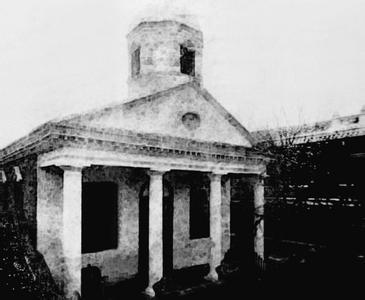Among the westerners who came to China in modern times, missionaries are a remarkable group. The judgment by people toward missionaries is mixed, especially because in historical narratives they were always associated with the imperialist invasion of China. Although there was no lack of good deeds among some missionaries, they were generally viewed negatively.
Whether they were accomplices of imperialist aggression or the driving force of Chinese modernization, the appraisal of missionaries from Chinese is always from the perspective of national interests. Their attention is basically focused on W. A. P. Martin, James Legge, Timothy Richard, Young John Allen and John Leighton Stuart. These men were deeply involved in the fields of Chinese culture and politics and had a profound influence on modern China.
However, in the context of global missionary work, there were thousands of missionaries who came to China, but only a few could really go down in the books of Chinese modern history. The vast majority of missionaries were just ordinary people. They came to China due to enthusiasm of faith and dedicated their lives to the ancient oriental country quietly.
The book Jin Ko-Niu: A Brief Sketch of the Life of Jessie M. Johnston for Eighteen Years W.M.A. Missionary in Amoy, China tells the story of an ordinary woman missionary. Born in 1861, Jessie M.Johnston was the Scottish daughter of a British Presbyterian missionary, James Johnston, who briefly preached in Xiamen. During his one year in China, he fell in love with this country. After he returned to Britain, he always hoped that he could return to Xiamen, but he could not do so. So he put his hope in the next generation.
Jessie grew up in a religious family, and her father often told her stories about Xiamen, which made her curious about Gulangyu Island. In 1885, after missionary training, Jessie took over her father's mission and set foot in Xiamen.
After Jessie came to Xiamen, in addition to going deep into southern Fujian to spread the Gospel, she put all her energy into women’s education. When she first came to Gulangyu Island, she took charge of the management of Wu Di All-female Academy (later changed to Huairen All-female High School). The school was founded in 1877 and there were 23 female students when she took over the school. In addition to improving the quality of her teaching and to make education more accessible to Chinese girls, she often traveled to Zhangzhou and other places to encourage local girls to study on Gulangyu Island.
She was good at motivating female students. It is recorded that "usually, as long as a female student made progress despite previously poor work, Jessie would turn over several backward freshmen to the girl and ask her to tutor them, so as to help the girl develop strong self-esteem. Any progress made by the girls would be noticed by this young teacher and all these stories would prove that even a simple word of encouragement from the teacher could be an important turning point in a girl's life." Her educational ideas are still worth learning today. Some of her students became doctors, teachers, good wives and mothers.
She left Xiamen in 1904 due to illness and died in 1907. She had an ordinary but glorious life.
The book mainly consists of her letters to friends and relatives and some journal entries. It describes her experience in managing a female school on Gulangyu Island in the late 19th century and her experiences in Xiamen and the surrounding areas.
- Translated by Nicolas Cao












